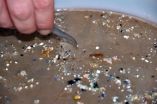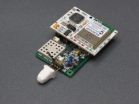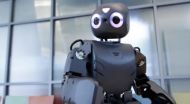(Press-News.org) Scientists at Stanford University and the Department of Energy's SLAC National Accelerator Laboratory have found a way to estimate uncertainties in computer calculations that are widely used to speed the search for new materials for industry, electronics, energy, drug design and a host of other applications. The technique, reported in the July 11 issue of Science, should quickly be adopted in studies that produce some 30,000 scientific papers per year.
"Over the past 10 years our ability to calculate the properties of materials and chemicals, such as reactivity and mechanical strength, has increased enormously. It's totally exploded," said Jens Nørskov, a professor at SLAC and Stanford and director of the SUNCAT Center for Interface Science and Catalysis, who led the research.
"As more and more researchers use computer simulations to predict which materials have the interesting properties we're looking for – part of a process called 'materials by design' -- knowing the probability for error in these calculations is essential," he said. "It tells us exactly how much confidence we can put in our results."
Nørskov and his colleagues have been at the forefront of developing this approach, using it to find better and cheaper catalysts to speed ammonia synthesis and generate hydrogen gas for fuel, among other things. But the technique they describe in the paper can be broadly applied to all kinds of scientific studies.
Speeding the Material Design Cycle
The set of calculations involved in this study is known as DFT, for Density Functional Theory. It predicts bond energies between atoms based on the principles of quantum mechanics. DFT calculations allow scientists to predict hundreds of chemical and materials properties, from the electronic structures of compounds to density, hardness, optical properties and reactivity.
Because researchers use approximations to simplify the calculations – otherwise they'd take too much computer time – each of these calculated material properties could be off by a fairly wide margin.
To estimate the size of those errors, the team applied a statistical method: They calculated each property thousands of times, each time tweaking one of the variables to produce slightly different results. That variation in results represents the possible range of error.
"Even with the estimated uncertainties included, when we compared the calculated properties of different materials we were able to see clear trends," said Andrew J. Medford, a graduate student with SUNCAT and first author of the study. "We could predict, for instance, that ruthenium would be a better catalyst for synthesizing ammonia than cobalt or nickel, and say what the likelihood is of our prediction being right."
An Essential New Tool for Thousands of Studies
DFT calculations are used in the materials genome initiative to search through millions of solids and compounds, and also widely used in drug design, said Kieron Burke, a professor of chemistry and physics at the University of California-Irvine who was not involved in the study.
"There were roughly 30,000 papers published last year using DFT," he said. "I believe the technique they've developed will become absolutely necessary for these kinds of calculations in all fields in a very short period of time."
Thomas Bligaard, a senior staff scientist in charge of theoretical method development at SUNCAT, said the team has a lot of work ahead in implementing these ideas, especially in calculations attempting to make predictions of new phenomena or new functional materials.
INFORMATION:
Other researchers involved in the study were Jess Wellendorff, Aleksandra Vojvodic, Felix Studt, and Frank Abild-Pedersen of SUNCAT and Karsten W. Jacobsen of the Technical University of Denmark. Funding for the research came from the DOE Office of Science.
SLAC is a multi-program laboratory exploring frontier questions in photon science, astrophysics, particle physics and accelerator research. Located in Menlo Park, California, SLAC is operated by Stanford University for the U.S. Department of Energy Office of Science.
The SUNCAT Center for Interface Science and Catalysis is a partnership between SLAC National Accelerator Laboratory and Stanford University. SUNCAT explores the atomic-scale design of catalysts for chemical processes related to energy conversion and storage. For more information, please visit suncat.slac.stanford.edu.
DOE's Office of Science is the single largest supporter of basic research in the physical sciences in the United States, and is working to address some of the most pressing challenges of our time. For more information, please visit science.energy.gov.
Citation: A.J. Medford, et al., Science, 11 July 2014 (10.1126/science.1253486)
Uncertainty gives scientists new confidence in search for novel materials
SLAC, Stanford advance will benefit thousands of computational studies in wide range of fields
2014-07-10
ELSE PRESS RELEASES FROM THIS DATE:
Scripps scientists discover evidence of super-fast deep earthquake
2014-07-10
As scientists learn more about earthquakes that rupture at fault zones near the planet's surface—and the mechanisms that trigger them—an even more intriguing earthquake mystery lies deeper in the planet.
Scientists at Scripps Institution of Oceanography at UC San Diego have discovered the first evidence that deep earthquakes, those breaking at more than 400 kilometers (250 miles) below Earth's surface, can rupture much faster than ordinary earthquakes. The finding gives seismologists new clues about the forces behind deep earthquakes as well as fast-breaking earthquakes ...
Leading scientists express rising concern about 'microplastics' in the ocean
2014-07-10
Microplastics – microscopic particles of plastic debris – are of increasing concern because of their widespread presence in the oceans and the potential physical and toxicological risks they pose to organisms.
This is the view of two of the world's most eminent authorities on the subject, Professor Kara Lavender Law, of Sea Education Association (Woods Hole, MA), and Professor Richard Thompson of Plymouth University (UK).
In an article published today in the journal Science, the two scientists have called for urgent action to "turn off the tap" and divert plastic waste ...
Control strategy for Dengue, malaria increases risk of West Nile virus
2014-07-10
Mosquitoes infected with the bacteria Wolbachia are more likely to become infected with West Nile virus and more likely to transmit the virus to humans, according to a team of researchers.
"Previous research has shown that Wolbachia -- a genus of bacteria that live inside mosquitoes -- render mosquitoes resistant to pathogen infection, thereby preventing the mosquitoes from infecting humans with the pathogens," said Jason Rasgon, associate professor of entomology, Penn State. "As a result, researchers are currently releasing Wolbachia-infected mosquitoes into the wild ...
New study shows drinking alcohol provides no heart health benefit
2014-07-10
PHILADELPHIA – Reducing the amount of alcoholic beverages consumed, even for light-to-moderate drinkers, may improve cardiovascular health, including a reduced risk of coronary heart disease, lower body mass index (BMI) and blood pressure, according to a new multi-center study published in The BMJ and co-led by the Perelman School of Medicine at the University of Pennsylvania. The latest findings call into question previous studies which suggest that consuming light-to-moderate amounts of alcohol (0.6-0.8 fluid ounces/day) may have a protective effect on cardiovascular ...
Study looks at how Twitter can be used to address specific health issues
2014-07-10
Childhood obesity is one of the top public health concerns in the United States, with 32 percent of youths aged 2-19 classified as obese as of 2012. As health problems such as childhood obesity grow, individuals and organizations have taken to Twitter to discuss the problem.
A new study, led by Jenine K. Harris, PhD, assistant professor at the Brown School at Washington University in St. Louis, examined the use of the hashtag #childhoodobesity in tweets to track Twitter conversations about the issue of overweight kids.
The study published this month in the American ...
Sophisticated radiation detector designed for broad public use
2014-07-10
CORVALLIS, Ore. – Nuclear engineers at Oregon State University have developed a small, portable and inexpensive radiation detection device that should help people all over the world better understand the radiation around them, its type and intensity, and whether or not it poses a health risk.
The device was developed in part due to public demand following the nuclear incident in Fukushima, Japan, in 2011, when many regional residents were unsure what level of radiation they were being exposed to and whether their homes, food, environment and drinking water were safe.
Devices ...
'Mississippi Baby' now has detectable HIV, researchers find
2014-07-10
The child known as the "Mississippi baby"—an infant seemingly cured of HIV that was reported as a case study of a prolonged remission of HIV infection in The New England Journal of Medicine last fall—now has detectable levels of HIV after more than two years of not taking antiretroviral therapy without evidence of virus, according to the pediatric HIV specialist and researchers involved in the case.
"Certainly, this is a disappointing turn of events for this young child, the medical staff involved in the child's care, and the HIV/AIDS research community," said NIAID ...
Your next Angry Birds opponent could be a robot
2014-07-10
With the help of a smart tablet and Angry Birds, children can now do something typically reserved for engineers and computer scientists: program a robot to learn new skills. The Georgia Institute of Technology project is designed to serve as a rehabilitation tool and to help kids with disabilities.
The researchers have paired a small humanoid robot with an Android tablet. Kids teach it how to play Angry Birds, dragging their finger on the tablet to whiz the bird across the screen. In the meantime, the robot watches what happens and records "snapshots" in its memory. ...
It's Your Game ... Keep It Real reduces dating violence among minority youth
2014-07-10
HOUSTON – (July 10, 2014) – New research from The University of Texas Health Science Center at Houston (UTHealth) shows that It's Your Game…Keep it Real (IYG), a health education program designed to delay sexual behavior and promote healthy dating relationships, can significantly reduce dating violence behaviors among minority youth.
According to the Centers for Disease Control and Prevention, 10 percent of high school youth are victims of physical dating violence and other studies suggest that more than 20 percent are victims of emotional dating violence. Previous studies ...
NOAA, partners predict significant harmful algal bloom in western Lake Erie this summer
2014-07-10
NOAA and its research partners predict that western Lake Erie will have a significant bloom of cyanobacteria, a toxic blue-green algae, during the 2014 bloom season in late summer. However, the predicted bloom is expected to be smaller than last year's intense bloom, and considerably less than the record-setting 2011 bloom.
Bloom impacts will vary across the lake's western basin and are classified by an estimate of both its concentration and how far it spreads.
Harmful algal blooms (HABs) were common in western Lake Erie between the 1960s and 1980s. After a lapse of ...
LAST 30 PRESS RELEASES:
Structural findings reveal how distinct GPCR ligands create different levels of activation
Anything-goes “anyons” may be at the root of surprising quantum experiments
UC review: Maximizing workplace opportunity for veterans
From generation to complex control: Metasurfaces make perfect vortex beams "within reach"
Thin-film lithium niobate-based detector: recent advances and perspectives
Exploring why some people may tend to persistently make bad choices
How cells balance their protein levels
Nirsevimab vs RSVpreF vaccine for RSV–related hospitalization in newborns
Effectiveness and impact of maternal RSV immunization and nirsevimab on medically attended RSV in US children
AI gives scientists a boost, but at the cost of too many mediocre papers
Next-generation vision model maps tree growth at sub-meter precision
Genes aren’t destiny for inherited blindness, study shows
MIT study: High-fat diets make liver cells more likely to become cancerous
Exposure to multiple fine particulate matter components and incident depression in the US Medicare population
Risk of burdensome health care spending over time in the US
Nirsevimab against hospitalizations and emergency department visits for lower respiratory tract infection in infants
New microfluidics technology enables highly uniform DNA condensate formation
A new strategy for immune tolerance
Super Mario Bros. help fight burnout: New study links classic games to boosted happiness
Deepest gas hydrate cold seep ever discovered in the arctic: International research team unveils Freya Hydrate Mounds at 3,640 m depth.
Integrating light and structure: Smarter mapping for fragile wetland ecosystems
ACA-SIM: A robust way to decode satellite signals over complex waters
Probiotics can restore gut microbiome in breastfed infants
AI could help predict nutrition risks in ICU patients, study finds
Federal EITC has unexpected result, researchers say – it decreases domestic violence
Researchers identify gene that calms the mind and improves attention in mice
Artificial metabolism turns waste CO2 into useful chemicals
Ancient sea anemone sheds light on animal cell type evolution
Begging gene leads to drone food
How climate policies that incentivize and penalize can drive the clean energy transition
[Press-News.org] Uncertainty gives scientists new confidence in search for novel materialsSLAC, Stanford advance will benefit thousands of computational studies in wide range of fields




